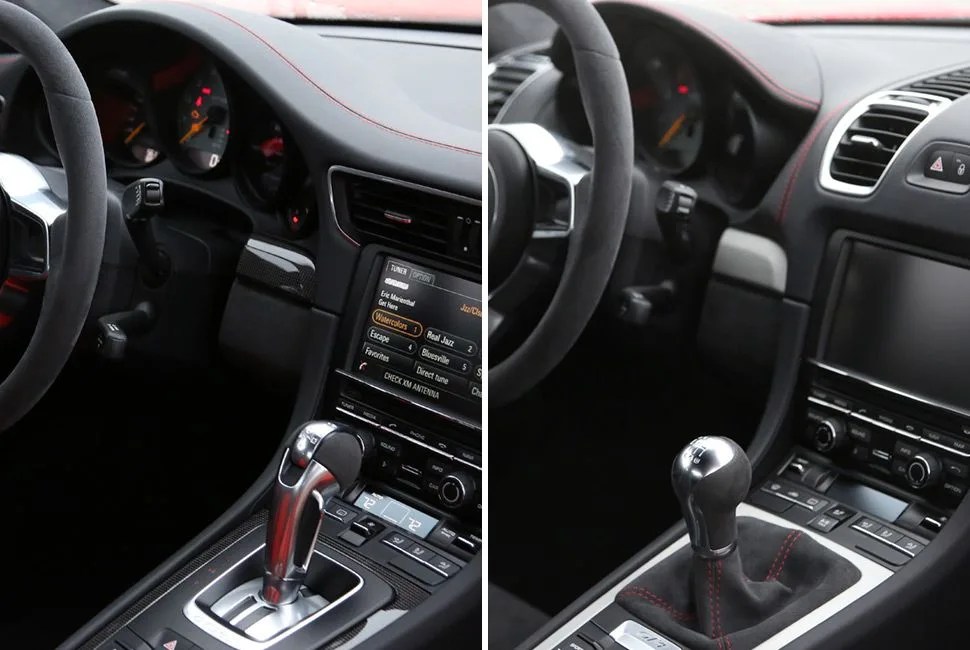11 photos
They said vinyl was dead, then that made a subtle comeback; then print was supposedly a goner, and we all know that’s not true. And for decades now, the automotive community has been taunting similar musings of the manual transmission’s impending extinction. Though its numbers have dwindled since the introduction of the mass-market automatic transmission in the mid-20th century, the manual hasn’t gone the way of the dodo just yet. It has simply made a new home in a niche market: enthusiasts and sports cars. While PDK, DSG and other dual-clutch transmissions do the same job of changing gears that a stick and third pedal do — and they do it faster than humanly possible — the old ways of analog driving can exist alongside the newer, increasingly quicker and more efficient tech. Both are relevant, and both serve a purpose.
Out on the track — where every tenth of a second matters, winning manufacturers are immortalized on race day, and track-day lap times earn hallowed bragging rights — manufacturers will do all they can to one-up the competition. It’s essentially an international performance pissing contest, and it’s why Ferrari, Lamborghini and McLaren don’t even offer a stick shift option anymore. They’re all in pursuit of being the quickest every day of the week. So it made sense that when the 2015 911 GT3 RS was announced — Porsche’s quickest and most track-focused 911 to date — the company revealed it’d be the first RS not to be equipped with the extra pedal. There was outcry from the Porsche faithful, asking why the “purist’s 911” was going the PDK-only route. Andreas Preuninger, head of Porsche’s motorsport and GT program, defended the switch, describing the GT3 RS as their “track-day special, the hero of the track days.” He continued on, “If you look at the Nurburgring Nordschleife public track days, 70 percent, no lie, are 911s. And most of them are RS’s.” Porsche is in pursuit of the all-important lowest lap time.

Circling Road Atlanta in the 2015 GT3 RS in the torrential rain, even as a self-professed enthusiast I was glad the 475 horsepower rear-mounted engine was bolted to Porsche’s PDK gearbox. I would never come close to what the best drivers in the world can abstract from this car, but in the rain, around a track I had never been to, in a high-strung road-legal race car I had never driven, I needed all the focus I could muster. All I had to worry about was hitting my braking points, staying on line and feeling for what the car was doing underneath me. Not having to focus on clutching and finding gears freed up the extra concentration I needed to set a brisk lap and, crucially, keep the $175,000 car out of the tire wall. The car cornered flat and even, quickly reached triple-digit speeds on the back straight, and the aero features bolted the RS to the track, shrugging off standing water and entering braking zones as if the pavement were bone dry.
Porsche GT3 RS Specs













